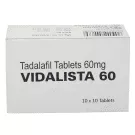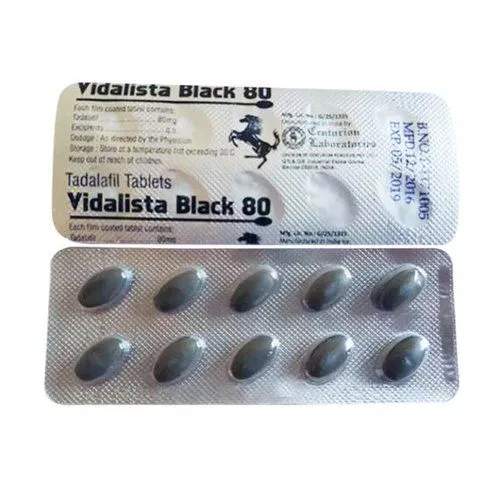Tadarise has significantly improved the lives of countless people as a widely prescribed medication for Erectile Dysfunction.
However, it has possible side effects that must be carefully managed, like any medication.
In the following article, we delve into the topic of how to manage Tadarise side effects.
This extensive guide provides you with the information and techniques to avoid these side effects.
Maximize your Tadarise experience by managing potential side effects for optimal health and intended effects.
Understanding Tadarise Side Effects
The active ingredient in Tadarise is Tadalafil, which is a Phosphodiesterase 5 inhibitor (PDE5).
Tadarise is a medication that effectively treats Erectile Dysfunction, but like any medication, it could have some side effects.
Patients must know these side effects to receive safer and more effective treatment.
Here, we’ll look at specific Tadarise side effects frequently reported and methods on how to spot them.
Tadarise’s side effects might range from minor to severe, depending on their severity.
Common side effects include headache, lightheadedness, nasal congestion, face flushing, and indigestion.
Typically, these symptoms are temporary and go away on their own once your body adjusts to the medicine.
Severe adverse effects are uncommon, but they may occur sometimes.
Priapism (a prolonged and painful erection), sudden visual or hearing loss, severe allergic reactions, chest pain, and breathing problems are some of the severe side effects.
If you experience any of these symptoms, seek medical attention immediately.
Save up to 90% on your medicine bills

Orgie 20 Mg Oral Strips

Vidalista 60 Mg

Tadalafil Black 80 Mg

Cenforce 200 Mg
Factors Influencing Tadarise Side Effects
Tadarise may create multiple reactions in a person’s body, resulting in side effects of varying severity.
Age also matters because some adverse effects may be more severe in older people due to age-related health issues.
Additionally, Tadarise may produce drug interactions with several medications like Nitrates and Alpha-blockers, and this interaction could have side effects.
Combining Tadarise with antifungal medications, HIV medications, and other PDE5 inhibitors can also increase the likelihood of side effects.
Consult with your doctor about Tadarise usage to avoid such interactions.
To learn more about the safety of Tadarise, read Is Tadarise Safe to Use? A Comprehensive Review of Its Safety Profile
How To Manage Tadarise Side Effects
 Source: Syda Productions
Source: Syda ProductionsEven though specific side effects of Tadarise might be unavoidable, some things can be done to manage them and lessen their impact on your health.
These include drinking plenty of water, refraining from consuming alcohol, and strictly adhering to the prescribed dosage.
Maintain the recommended dosage: It is important to follow the recommended dose of Tadarise to avoid overdosage.
Taking more than the recommended amount can increase the chances of experiencing side effects associated with Tadarise.
Timing is important: Take Tadarise (Tadalafil) as directed, often 30 to 60 minutes before engaging in sexual activity.
Maintaining hydration: Adequate water consumption helps reduce typical side effects, such as headaches and face flushing.
Avoid grapefruit and alcohol: Tadarise and grapefruit products may interact with Tadalafil in this medicine, intensifying these adverse effects.
Tadalafil and alcohol may interact negatively and be dangerous when taken together.
Consult a medical professional: Do not hesitate to talk to your doctor if you notice any bothersome side effects. They can give advice and, if necessary, make changes to your dosage.
Conditions of emergency: Seek immediate medical attention if you have severe side effects, including Priapism, sudden visual or hearing loss, or allergic reactions.
Conclusion
A safe and effective treatment path requires effective management of Tadarise’s side effects.
To improve their quality of life, patients should be aware of possible side effects and know what factors can cause them. Proper treatment techniques can also help.
To get the most out of Tadarise while minimizing adverse effects, it’s important to talk openly with doctors and use medication responsibly.
Always seek the advice and support of a doctor if you have any worries or questions.

Frequently Asked Questions
Can I adjust the Tadarise dosage on my own?
No, you should never adjust the Tadarise dosage without consulting your healthcare provider. Changing the dosage without medical supervision can increase the risk of side effects and compromise the effectiveness of the medication.
What should I do if I experience severe side effects from Tadarise?
If you experience severe side effects of Tadarise, seek immediate medical attention. Severe side effects of Tadarise include Priapism, sudden vision or hearing loss, or severe allergic reactions. Do not delay seeking medical help; immediate action is crucial in such situations.
Can Tadarise interact with other medications?
Yes, Tadarise may interact with specific medications, especially those containing nitrates or alpha-blockers. To avoid any potential adverse effects, it is crucial to inform your healthcare provider about all the medications you are presently taking.
Can I take Tadarise with pre-existing medical conditions?
Certain pre-existing medical condition like Cardiovascular and kidney problems can have negative interation with Tadarise. It is crucial to have a conversation with your doctor about your medical history before using Tadarise to ensure its safety and appropriateness for you.
Is Tadarise safe for long-term use?
Tadarise is generally safe for long-term use when taken as prescribed and under the guidance of a healthcare provider. It is crucial to have routine check-ups to keep track of your health and evaluate the ongoing improvement of your treatment.
Cheap Medicine Shop only refers to credible, authoritative sources
for our content. If you’re curious about how we ensure the integrity
of our content, we encourage you to read our Content Information
Policy.














